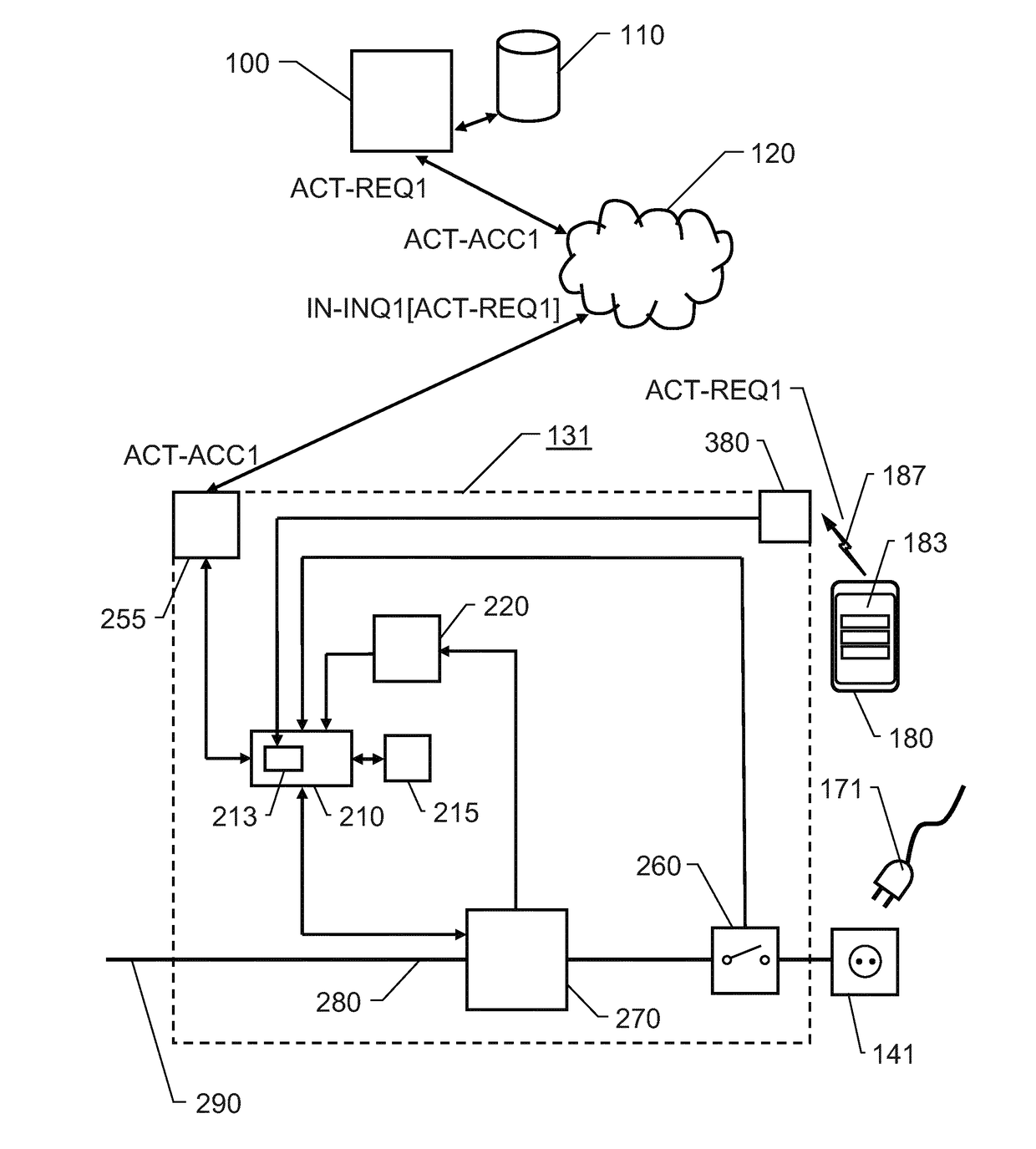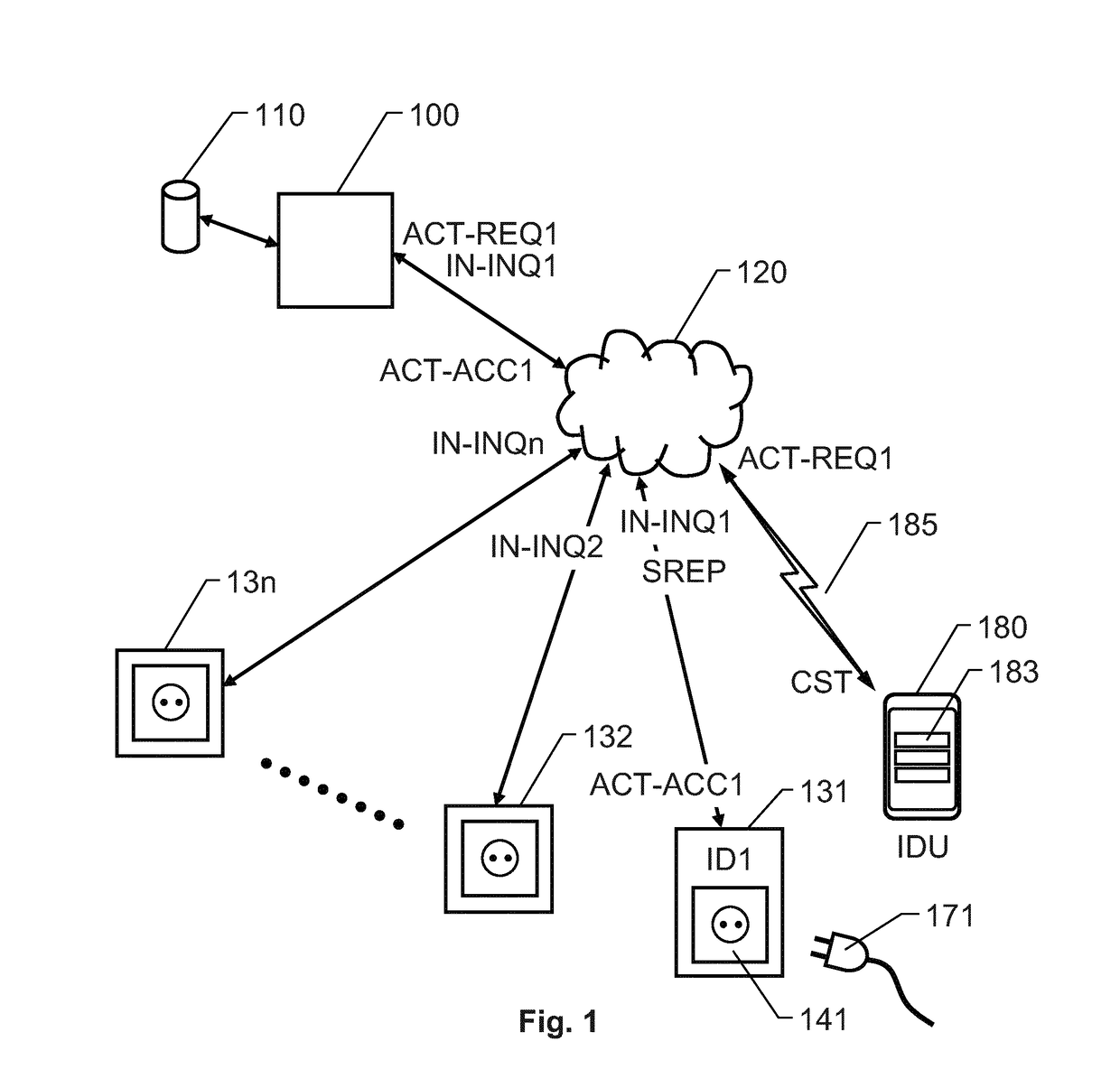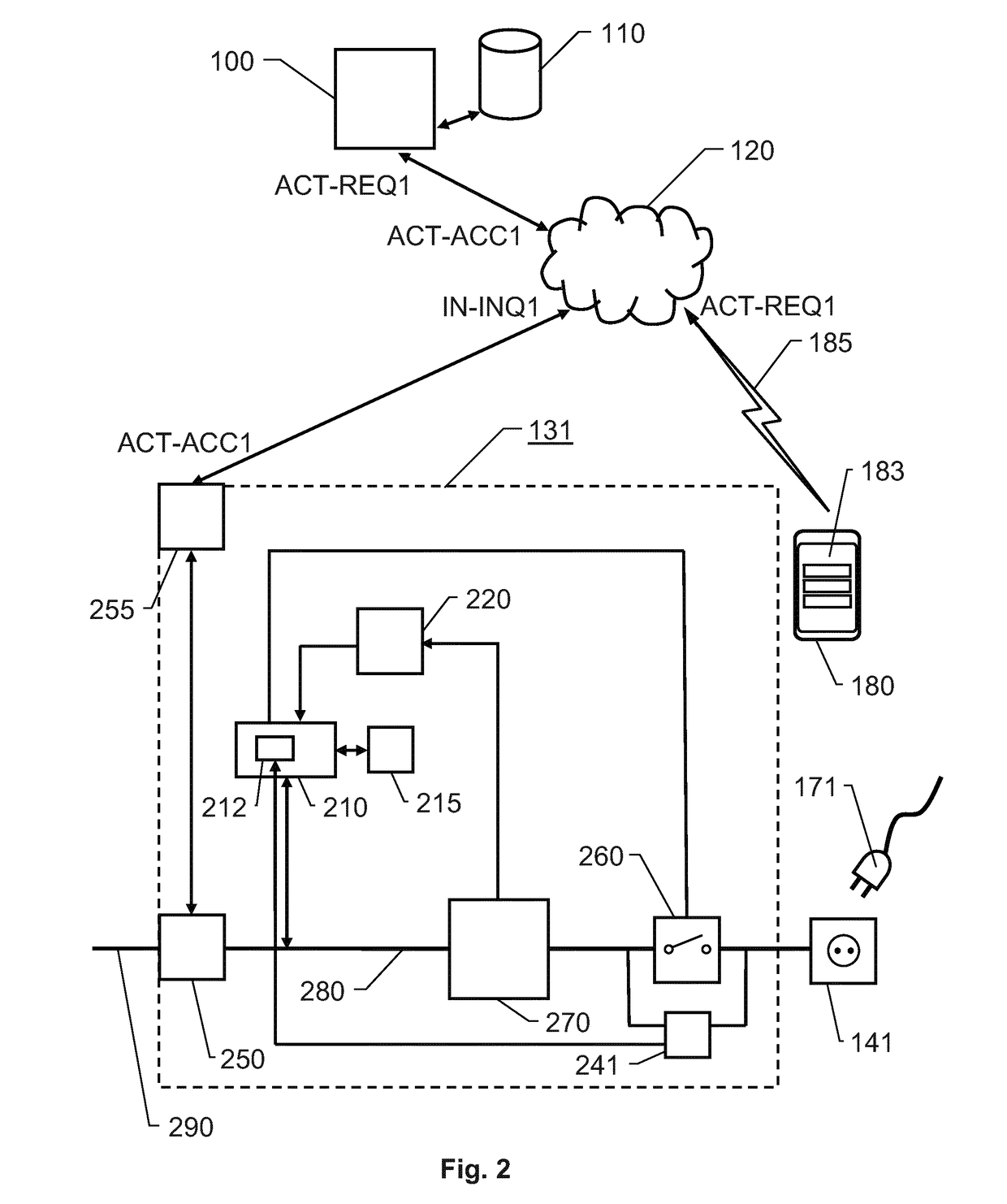System, method, mobile terminal and computer software for providing electric energy to users
a technology for mobile users and mobile terminals, applied in the direction of electric variable regulation, sustainable buildings, instruments, etc., can solve the problems of inflexible, complex and inflexible solutions, and none of the known solutions provides an interface to the control server
- Summary
- Abstract
- Description
- Claims
- Application Information
AI Technical Summary
Benefits of technology
Problems solved by technology
Method used
Image
Examples
first embodiment
[0042]FIG. 2 illustrates further details of a supply node 131 according to the invention.
[0043]As mentioned above, each supply node 131, 132 and 13n is configured to receive electric energy from an external power source. In FIG. 2, this is symbolized by an input power line 290. The input power line 290, in turn, is typically represented by a power grid. However, the input electric power may equally well originate from a standalone source of energy, e.g. a set of solar panels or a generator. In any case, the supply node 131 is configured to provide output electric energy based on the input energy from the external power source 290 via at least one remote-controlled outlet 141 associated with the node 131.
[0044]To enable communication between the supply node 131 and the server node 100 (e.g. in respect of the activation accept ACT-ACC1), the supply node 131 preferably includes a network interface 255 configured to be connected to the at least one communication network 120. In the embo...
second embodiment
[0050]FIG. 3 illustrates details of a supply node 131 according to the invention. Here, all elements, units and messages bearing the same reference labels as described above with reference to FIG. 2 designate the same elements, units and messages as in FIG. 2. For illustrating purposes, in the embodiment shown in FIG. 3, the supply node 131 does not include any powerline-to-Ethernet converter. Therefore, instead, the processing unit 210 is arranged to communicate internally in the supply node 131 exclusively via dedicated data lines.
[0051]Moreover, in FIG. 3, the supply node 131 includes a short-range radio interface 380 (e.g. of NFC type) configured to detect the presence of a mobile terminal 180 in proximity to the outlet 141 via electromagnetic-field fluctuations 187. A second trigger module 213 in the supply node 131 is configured to generate an inquiry IN-INQ1[ACT-REQ1] in response to a mobile terminal 180 being detected by the short-range radio interface 380. Analogous to the ...
PUM
 Login to View More
Login to View More Abstract
Description
Claims
Application Information
 Login to View More
Login to View More - R&D
- Intellectual Property
- Life Sciences
- Materials
- Tech Scout
- Unparalleled Data Quality
- Higher Quality Content
- 60% Fewer Hallucinations
Browse by: Latest US Patents, China's latest patents, Technical Efficacy Thesaurus, Application Domain, Technology Topic, Popular Technical Reports.
© 2025 PatSnap. All rights reserved.Legal|Privacy policy|Modern Slavery Act Transparency Statement|Sitemap|About US| Contact US: help@patsnap.com



